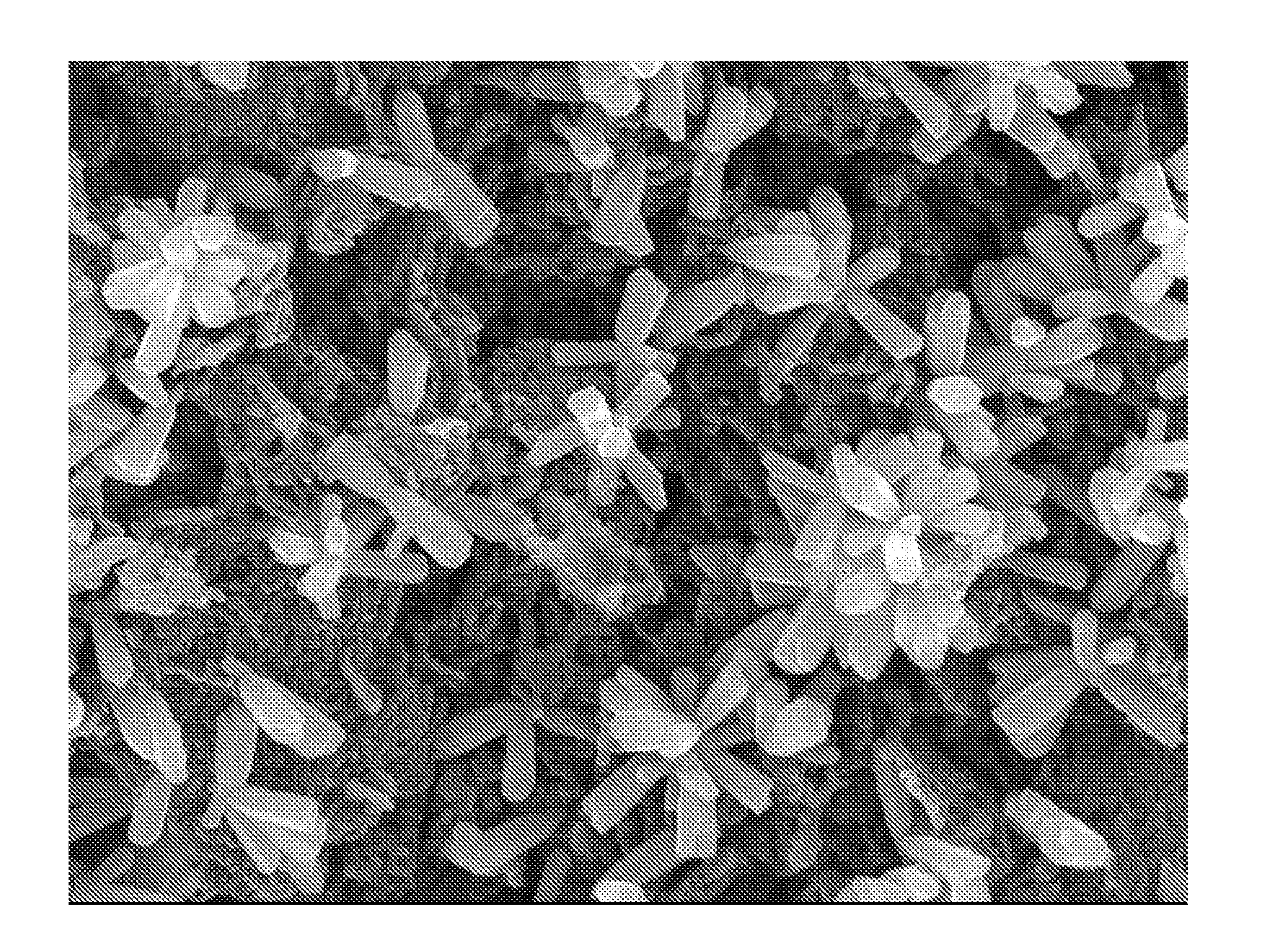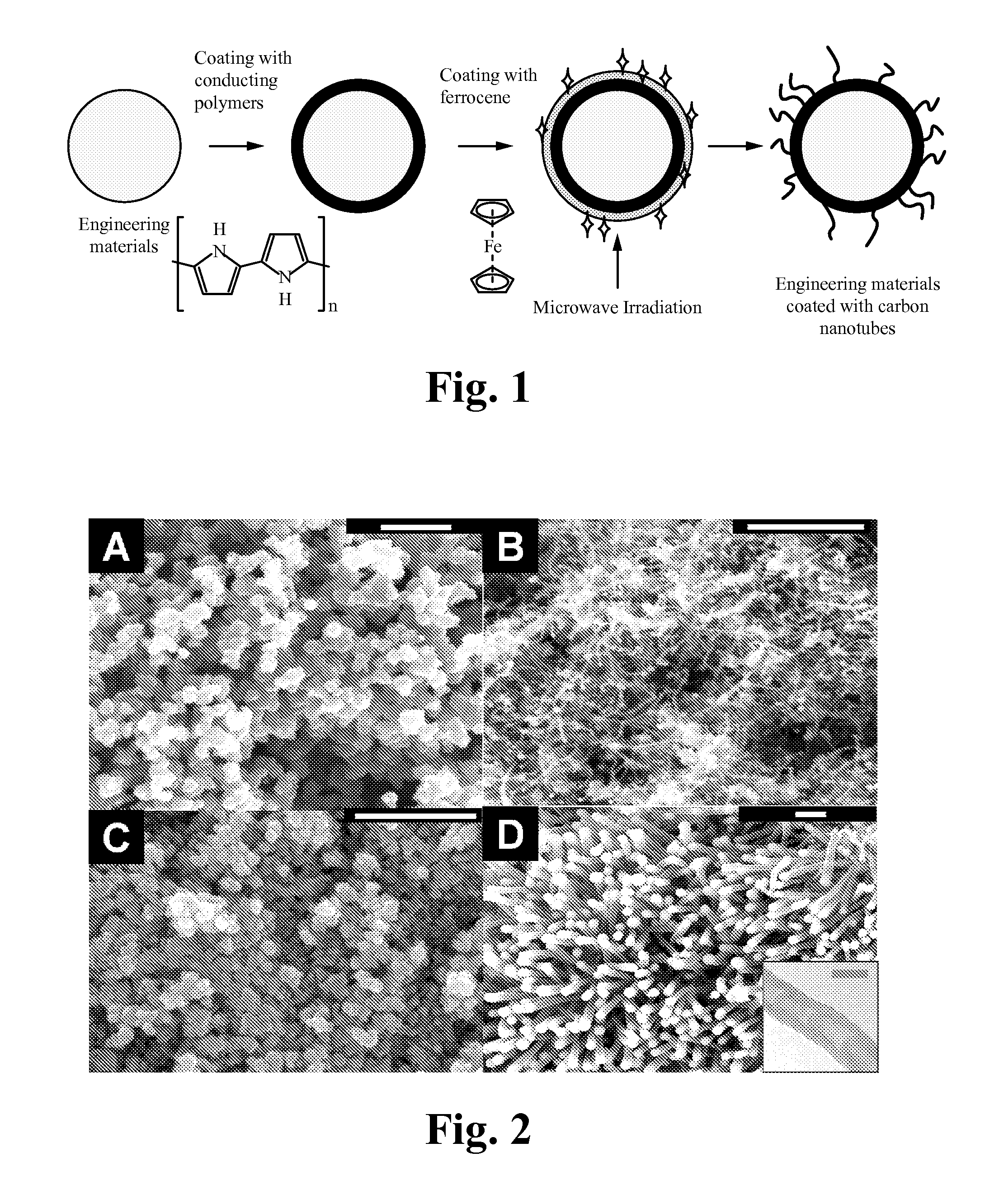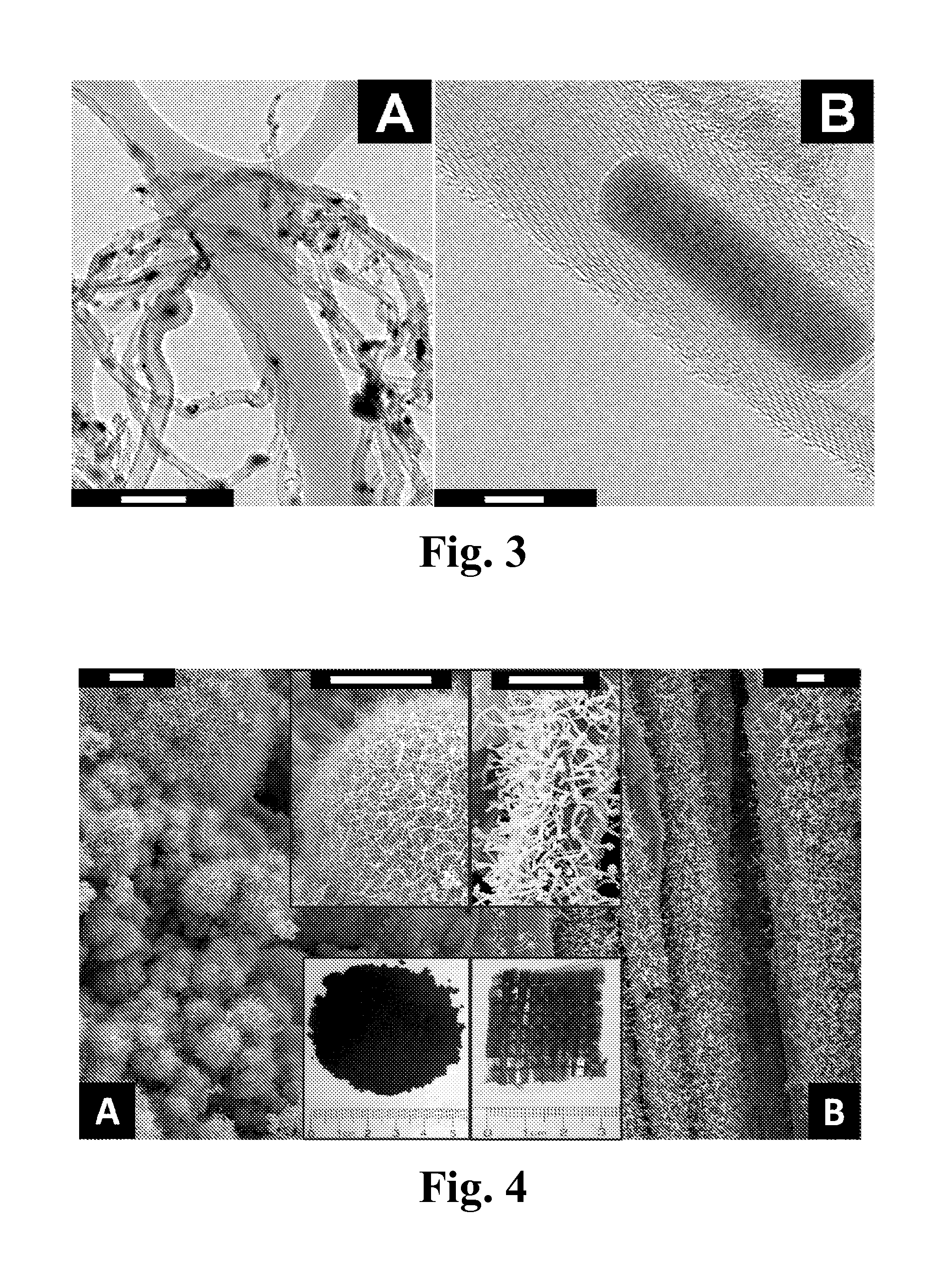Novel nanocomposite for sustainability of infrastructure
a technology of infrastructure and nanocomposites, applied in the field of nanocomposites, can solve the problems of high cost of cnt raw materials and difficulty in its processing and application, large amount of green house gas emission, and susceptibility to deterioration in severe environments, and achieve significant social, economic and environmental benefits, high toughness, and high tensile strength
- Summary
- Abstract
- Description
- Claims
- Application Information
AI Technical Summary
Benefits of technology
Problems solved by technology
Method used
Image
Examples
experiment # 1
Experiment #1
[0047]In situ deposition of conducting polymer on fly ash:
one gram of fly ash was stirred in 60 ml of 0.2M solution of pyrrole in water. To this mixture was added 40 ml of a 0.04M solution of the oxidant ammonium peroxydisulfate, also in water. After 1 hour, the resulting dark precipitate of polypyrrole coated fly ash was suction filtered, washed with copious amounts of water and acetone and dried under a dynamic vacuum at 50° C. for 12 hours.
[0048]Microwave treatment: the polypyrrole coated fly ash is able to then be mixed well with ferrocene (preferably through a fast spinning mixer) at different weight ratio, for example a one to one ratio. Upon 10 seconds of irradiation using a standard (household) microwave, the mixture is heated up and the ferrocene is decomposed to iron catalyst and carbon source, then followed up by quick carbon nanotube growth on the fly ash surface.
experiment # 2
Experiment #2
[0049]Conducting PPy.Cl coated fly ash and glass fiber cloth were selected as the substrate materials. 10 g powder of the fly ash-CNT nanocomposites is easily produced using this Poptube approach within 10 minutes in the lab (as shown in insert of image A in FIG. 4), and make CNT coated glass fiber fabrics with dimension at 1 inch×1 inch (as shown in insert of image B in FIG. 4), which depends on the size of the container in the microwave oven.
[0050]These CNT-decorated engineering materials are able to be used as multifunctional fillers into a polymer matrix, or construction materials to build intelligent structures, in order to enhance the electrical and thermal conductivity and mechanical strength. To demonstrate the applicability of this strategy, CNT decorated glass microballoons, as illustrated in Image C of FIG. 8, were used as filler to enhance the mechanical characteristics of epoxy based conventional syntactic foam (SF). The CNT grown amino-silane treated glass...
experiment # 3
Experiment #3
Synthesis of Conductive Polypyrrole Coated Engineering Materials
[0052]In a typical experiment, 1 g fly ash (glass fiber, glass balloon or others) is dispersed in 60 mL 1M HCl under magnetically stirring for 10 minutes, pyrrole (0.24 M) was then added into the above dispersed glass fiber / HCl mixture suspension, then stirred for 10 minutes. After that, 0.03 M ammonium peroxydisulfate (APS) was added into the solution mixture and stirring for 4 hours resulting in polypyrrole coated fly ash in the form of dark precipitates. The resulting black precipitate of polypyrrole coated fly ash was suction filtered, washed with copious amounts of aq. 1 M HCl (3×100 mL) and acetone (3×100 mL) and dried under freeze dry for 12 hours. The yield of polypyrrole coated fly ash was ˜1200 mg.
PUM
| Property | Measurement | Unit |
|---|---|---|
| Temperature | aaaaa | aaaaa |
| Time | aaaaa | aaaaa |
| Temperature | aaaaa | aaaaa |
Abstract
Description
Claims
Application Information
 Login to View More
Login to View More - R&D
- Intellectual Property
- Life Sciences
- Materials
- Tech Scout
- Unparalleled Data Quality
- Higher Quality Content
- 60% Fewer Hallucinations
Browse by: Latest US Patents, China's latest patents, Technical Efficacy Thesaurus, Application Domain, Technology Topic, Popular Technical Reports.
© 2025 PatSnap. All rights reserved.Legal|Privacy policy|Modern Slavery Act Transparency Statement|Sitemap|About US| Contact US: help@patsnap.com



